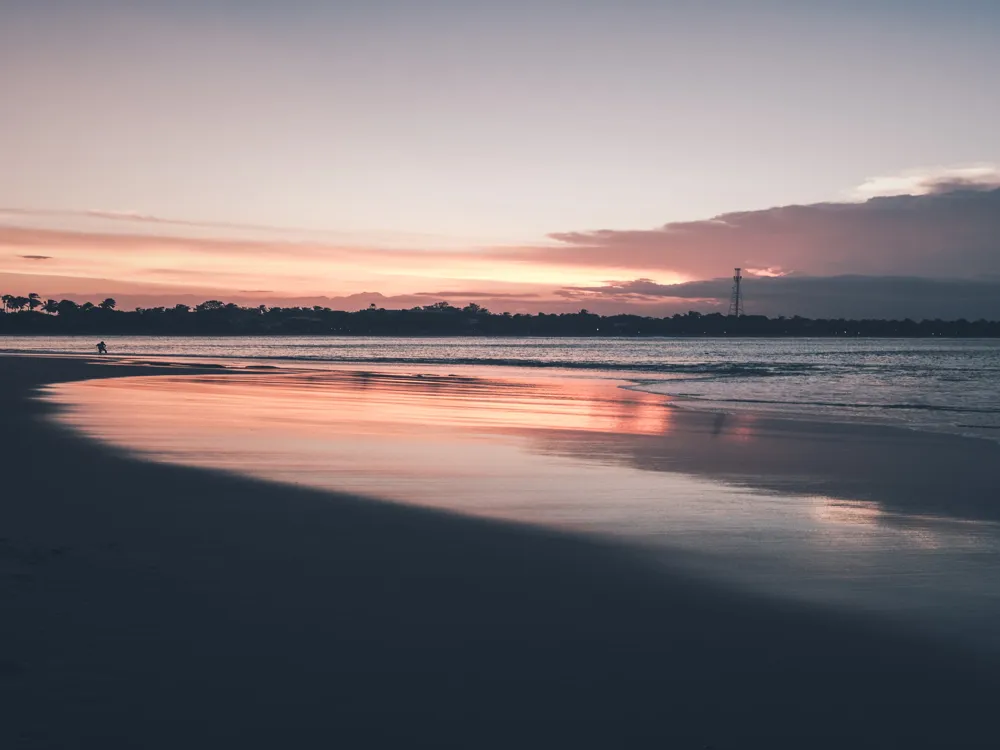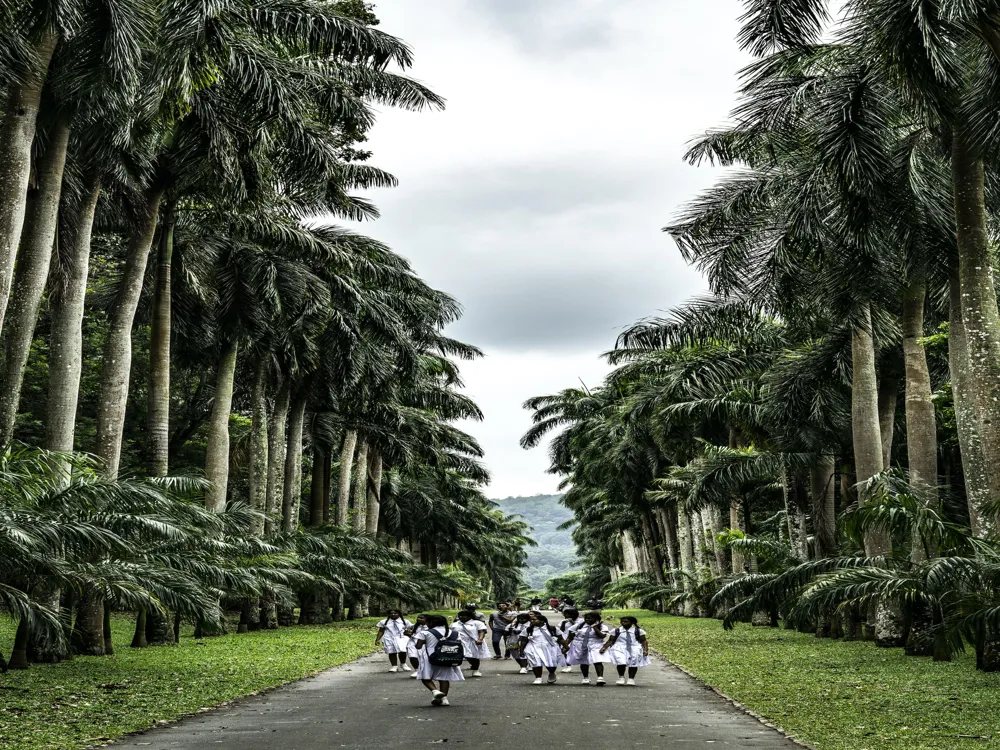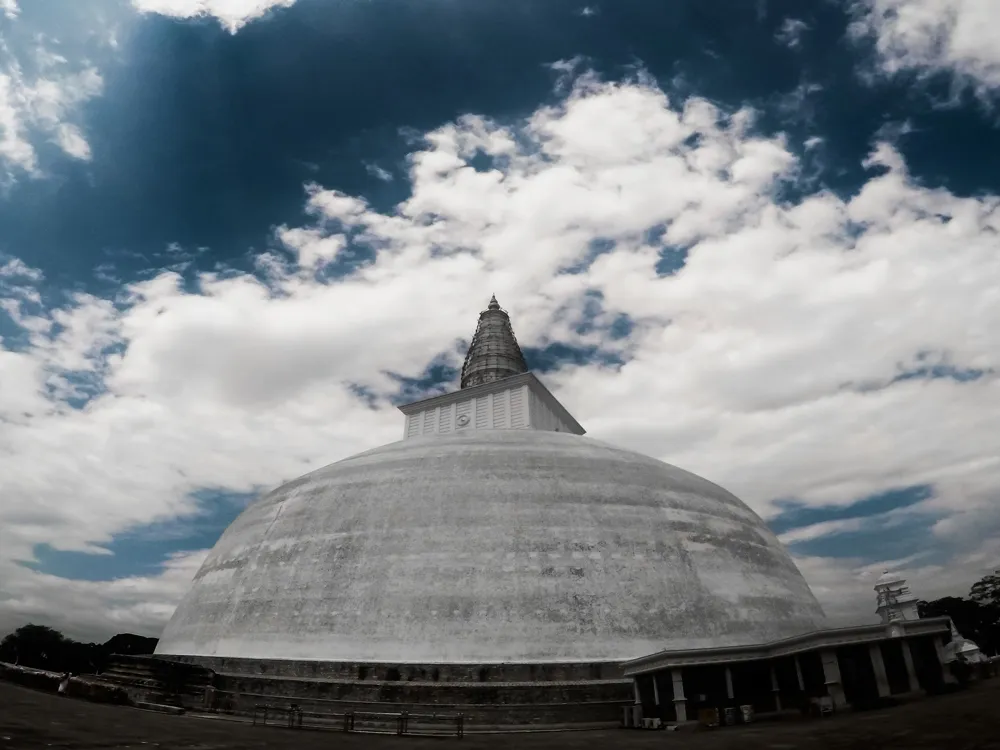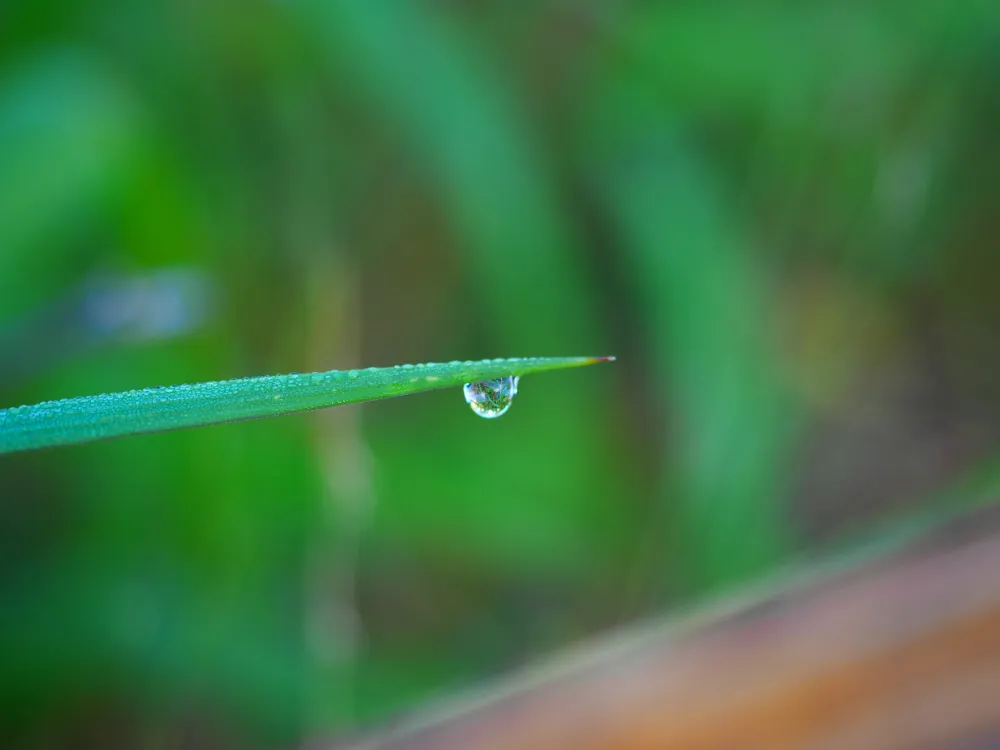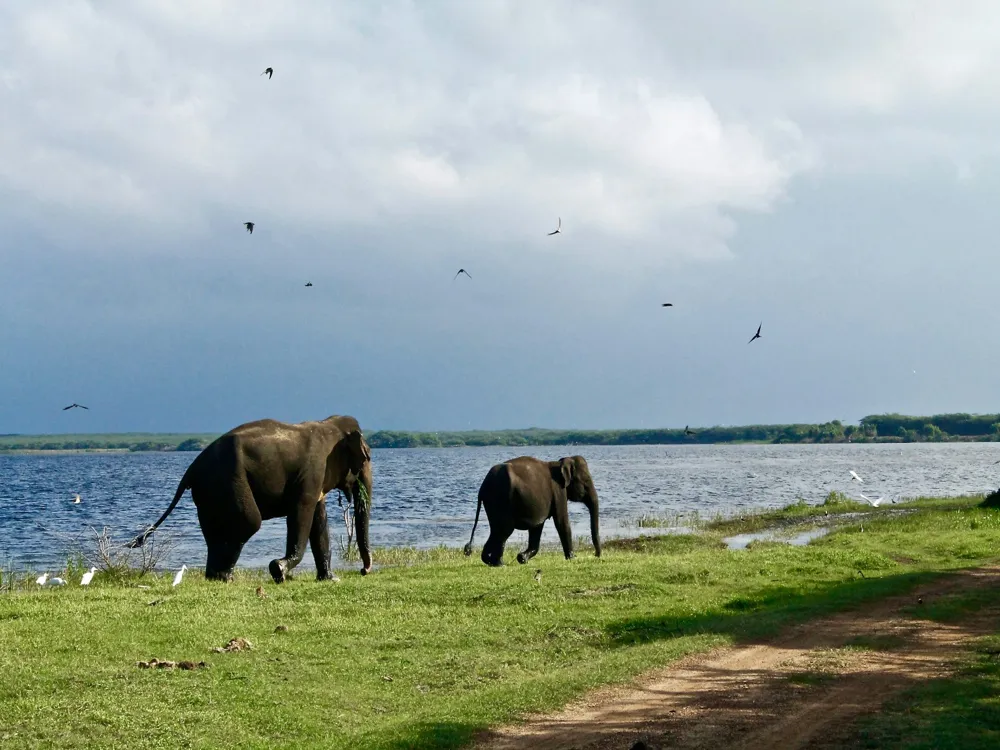Crocodile Rock, located in the serene coastal town of Arugam Bay in Sri Lanka, is a destination of unparalleled natural beauty and tranquility. This iconic location, named for its unique rock formations that resemble a crocodile, offers a mesmerizing panorama of the bay, making it a favorite spot for both tourists and locals. The area is renowned for its rich biodiversity, including a variety of bird species and the occasional sighting of crocodiles in the nearby lagoon, adding an element of adventure to its serene beauty. The history of Crocodile Rock is as fascinating as its landscape. Historically, the area has been a focal point for local fishermen. Over the years, it has evolved into a popular spot for surfing, bird watching, and simply enjoying the breathtaking views of the sunrise and sunset. The rock itself is an impressive geological formation, standing as a testament to the natural beauty of Arugam Bay. Its significance extends beyond just a scenic viewpoint, as it embodies the harmony between nature and the local community, which has thrived alongside this natural wonder for generations. The architecture of Crocodile Rock and its surroundings is a blend of natural and man-made elements that coexist in harmony. The rock formation itself is a natural architectural marvel, sculpted by the forces of nature over millennia. Its rugged surface, characterized by sharp edges and smooth curves, stands in contrast to the soft, sandy beaches that surround it. The panoramic view from the top of Crocodile Rock offers a unique perspective of the bay, encompassing the traditional fishing boats dotting the coastline and the rustic thatched huts that line the shore. In recent years, there has been a conscious effort to develop the area in a way that respects the natural landscape. This has led to the emergence of eco-friendly architecture, with buildings constructed using sustainable materials and designed to minimize environmental impact. The local architecture reflects the cultural heritage of Arugam Bay, with influences from various periods of Sri Lankan history. The fusion of traditional Sri Lankan styles with modern sustainable practices creates an architectural ethos that is both unique and environmentally sensitive. The best time to visit Crocodile Rock is between April and October when the weather is dry, and the ocean is calm, making it ideal for surfing and wildlife spotting. Essential items include sunscreen, water, a camera, and binoculars for bird watching. If you plan to hike to the top of the rock, sturdy shoes are a must. Respect local customs and traditions. Dress modestly, especially when visiting nearby villages, and always ask permission before photographing locals. Reaching Crocodile Rock in Arugam Bay is an adventure in itself. The closest major town is Pottuvil, which is well-connected by road. From Pottuvil, you can hire a tuk-tuk or a local taxi to take you to Arugam Bay. The journey offers a scenic route through the lush countryside and along the coastline. Once in Arugam Bay, Crocodile Rock is easily accessible by a short hike or boat ride, depending on the weather and sea conditions. The hike is relatively easy and offers a great opportunity to immerse yourself in the natural beauty of the area. Read More:Overview of Crocodile Rock, Arugam Bay
Architecture of Crocodile Rock, Arugam Bay
Tips When Visiting Crocodile Rock, Arugam Bay
Best Time to Visit
What to Bring
Local Etiquette
How To Reach Crocodile Rock, Arugam Bay
Crocodile Rock, Arugam Bay
Arugam Bay
₹ 18,572 onwards
View arugam-bay Packages
Weather :
Tags : Museum
Time Required : 1-2 hours
Planning a Trip? Ask Your Question
Arugam-bay Travel Packages
View All Packages For Arugam-bay
Top Hotel Collections for Arugam-bay

Private Pool

Luxury Hotels

5-Star Hotels

Pet Friendly
Top Hotels Near Arugam-bay
Other Top Ranking Places In Arugam-bay
View All Places To Visit In arugam-bay
Faq on Arugam-bay
What is Crocodile Rock in Arugam Bay?
Crocodile Rock is a prominent rock formation located in Arugam Bay, a popular surfing destination in Sri Lanka. It is named after the crocodiles that are sometimes spotted in the area.
Is it safe to visit Crocodile Rock?
While Crocodile Rock is generally safe for visitors, it's important to exercise caution, especially near the water's edge where crocodiles may be present. Follow any posted safety guidelines and avoid swimming in areas where crocodile sightings have been reported.
What activities can I do at Crocodile Rock?
Visitors to Crocodile Rock can enjoy activities such as surfing, sunbathing, and sightseeing. The rock itself offers a great vantage point for capturing panoramic views of the surrounding coastline.
Are there any accommodations near Crocodile Rock?
Yes, there are several accommodations available near Crocodile Rock ranging from budget guesthouses to upscale resorts. Visitors can choose from a variety of options depending on their preferences and budget.
Can I swim near Crocodile Rock?
Swimming near Crocodile Rock is not recommended due to the potential presence of crocodiles in the water. It's safer to enjoy other water activities such as surfing or snorkeling in designated areas.
View arugam-bay Packages
Weather :
Tags : Museum
Time Required : 1-2 hours
Planning a Trip? Ask Your Question
Arugam-bay Travel Packages
View All Packages For Arugam-bay
Top Hotel Collections for Arugam-bay

Private Pool

Luxury Hotels

5-Star Hotels

Pet Friendly
Top Hotels Near Arugam-bay
Other Top Ranking Places In Arugam-bay
Faq on Arugam-bay
What is Crocodile Rock in Arugam Bay?
Crocodile Rock is a prominent rock formation located in Arugam Bay, a popular surfing destination in Sri Lanka. It is named after the crocodiles that are sometimes spotted in the area.
Is it safe to visit Crocodile Rock?
While Crocodile Rock is generally safe for visitors, it's important to exercise caution, especially near the water's edge where crocodiles may be present. Follow any posted safety guidelines and avoid swimming in areas where crocodile sightings have been reported.
What activities can I do at Crocodile Rock?
Visitors to Crocodile Rock can enjoy activities such as surfing, sunbathing, and sightseeing. The rock itself offers a great vantage point for capturing panoramic views of the surrounding coastline.
Are there any accommodations near Crocodile Rock?
Yes, there are several accommodations available near Crocodile Rock ranging from budget guesthouses to upscale resorts. Visitors can choose from a variety of options depending on their preferences and budget.
Can I swim near Crocodile Rock?
Swimming near Crocodile Rock is not recommended due to the potential presence of crocodiles in the water. It's safer to enjoy other water activities such as surfing or snorkeling in designated areas.


